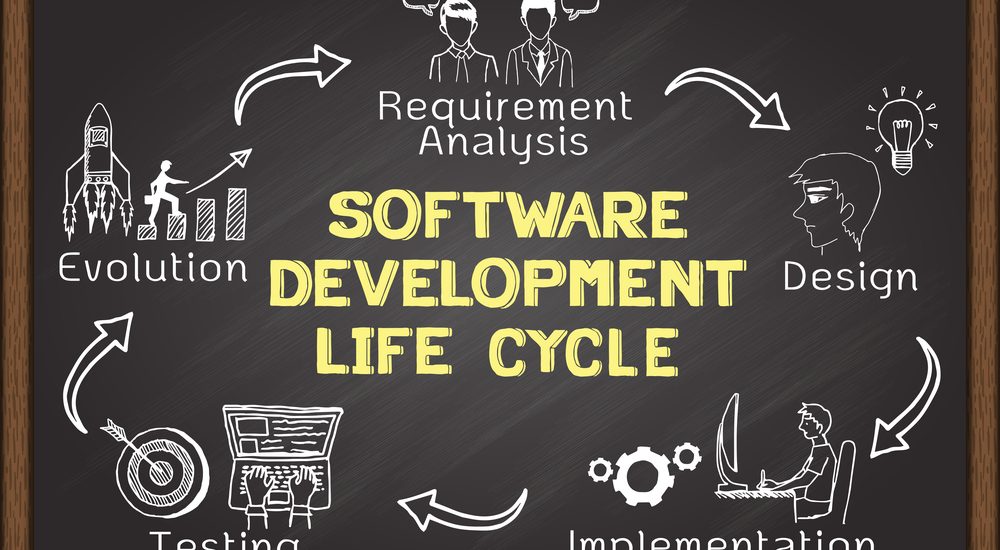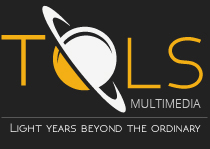- December 30, 2020
- Posted by: TOLS Multimedia
- Category: Blog

When working on a software development project, there are many different approaches that leaders and teams can utilize to complete their goals. While one single gold-standard approach would be ideal, it is more realistic to have numerous kinds of strategies because teams are made of people – and people respond and behave differently from one another. In this article, we’ll discuss an iterative approach to project management and the software development process called agile.
If you’re looking for the best custom software development for your business, consult TOLS Multimedia today to see how we can help.
Understanding Agile
The simplest way to explain agile is to describe it as a way of doing things – particularly how to approach project management and software development. This is especially important because while one would assume that the only skills needed for software development is technical knowledge, in the real world, these types of software development projects rely heavily on collaboration and teamwork. To efficiently perform tasks toward a common goal, it is best to follow a certain group of principles that can bind every member together.
The difficulty in describing what agile project management is stems from the fact that as a concept, it is highly dynamic. It is based on a workflow that prioritizes workload in short increments compared to other workflows that prefer large workloads. The shorter workloads using the agile approach affords the members ample time to review and evaluate the quality of the work and results more intensely. This also allows members of the team to respond to changes and challenges sooner and easier than it would be for them if they were to spot the problem later with a more finished product.
To further understand agile, it must be emphasized that the key concepts behind this approach is extensively explained in the Agile Manifesto, a text authored by a group of seventeen people that decided to cohesively put all the principles in one place (AgileManifesto.org). Being historically placed to debut in 2001, it is generally agreed that agile principles and methodologies have already been practiced before without people knowing that they have been practicing agile.
Overall, agile is a broad term for different methodologies that effectively follows the agile principles and ideologies. The most popular methodologies that employ agile would include Scrum, Lean, XP, DSDM, Crystal, Kanban, and FDD to name a few.
What is Agile Software Development?
Agile software development essentially refers to software development following the agile principles guiding throughout the entire process. As mentioned above, methods such as Scrum and Lean are commonly employed, but the mindset and approach follow the agile guidelines.
One thing that is emphasized in agile software development is the focus on the people and how they work. The agile approach heavily encourages teamwork and collaboration – not only between the team members but also between the developers and the clients. This intertwined software development relationship between the team members promotes speedy and quality results while an open communication line between the team and the clients will help ensure satisfaction from the clients with the product of the developers.
An interesting trait of agile software development is that it can generally lead a team without a manager since following the principles should expect all members to know their roles and how each can effectively contribute towards an end goal. However, if a position for a manager is available, the role of the manager is to really take a step back and just make sure that all the gears are turning.
Agile Manifesto and Principles in Software development
As written in the Agile Manifesto, the agile approach follows 12 principles. The principles are as follows:
- Our highest priority is to satisfy the customer through early and continuous delivery of valuable software.
- Welcome changing requirements, even late in development. Agile processes harness change for the customer’s competitive advantage.
- Deliver working software frequently, from a couple of weeks to a couple of months, with a preference to the shorter timescale.
- Business people and developers must work together daily throughout the project.
- Build projects around motivated individuals. Give them the environment and support they need, and trust them to get the job done.
- The most efficient and effective method of conveying information to and within a development team is face-to-face conversation.
- Working software is the primary measure of progress.
- Agile development processes promote sustainable development. The sponsors, developers, and users should be able to maintain a constant pace indefinitely.
- Continuous attention to technical excellence and good design enhances agility.
- Simplicity-the art of maximizing the amount of work not done-is essential.
- The best architectures, requirements, and designs emerge from self-organizing teams.
- At regular intervals, the team reflects on how to become more effective, then tunes and adjusts its behavior accordingly.
Collectively, the 12 principles or agile manifesto achieve multiple things towards a common goal which is essentially a satisfied client. However, one can see patterns as to what is important when it comes to the agile development approach. For example, multiple principles speak of the importance of being able to submit a working software in a short amount of time. Simultaneously, multiple principles also speak about the importance of human relationships in the process.
Taken individually, each agile manifesto principle speaks volumes on what is important. For example, the first agile manifesto principle specifically mentions “early and continuous delivery of valuable software.” This statement refers to the open line of communication between the team of developers and the clients where an early delivery can mean early feedback as well. Feedback is especially important in agile because feedback introduces new goals for the team to achieve.
Alternative Agile Methodology
When it comes to agile software development process, it is all about making a series of tweaks and changes throughout the entire process. Together with continuous planning, learning, and collaboration, the process can help refine projects before a final product is decided upon. With everyone aligned and working towards one goal, this dynamic process can be a boon to different teams.
While the agile methodology can bring about plenty of positives in software development, it remains a mindset without any specific roles, milestones, or even artifacts. You might require a specific framework to help put things into perspectives, and these are just some of the examples that might be useful to you:
Scrum
A framework that allows for teams to tackle more complex and malleable issues, the Scrum approach also leaves room for the most creative and productive delivery of an end product with the highest value. By concentrating on managing tasks within different teams in a development cycle, the empowerment and smaller working teams can result in great benefits.
Similar to the Scrum that takes place in a rugby match, this method requires three roles to be filled. The Scrum Master helps to set up the team, take care of the obstacles, and prepare for the sprint. The Product Owner will need to come up with the product backlog, the priorities within the backlog, and takes charge of the delivery at each stage.
Lastly, the Scrum Team will be managing itself and organizing in the best way possible to complete the sprint.
Extreme Programming
Extreme Programming, or XP, is also one of the more popular agile methodology when it comes to agile development. If there are continuous demands and changes required from the client, or if the client themselves are unsure about what they want, XP is perfect for that.
By producing many iterations of the product using short development cycles, clients’ concerns can be addressed at different checkpoints, all while the productivity of the system is improved at every stage. This will always help put your customer’s concerns as the priority.
With constant feedback, swift cycles, and collaborative teamwork, the XP method is one that can help create high-quality products that clients would be happy with.
Lean
Another potential approach to consider is Lean, where the priority is all about delivering the best product with the least amount of wastage and costs. If you are looking to improve your processes, help drive innovation, and eliminate as much waste as possible, going Lean is your best option.
It requires these seven steps:
- Reducing waste
- Increasing learning
- Decision-making at the last possible stage
- Team empowerment
- Building integrity
- Swift delivery
- Understanding the big picture
Rather than depend on different levels of authorization, empowering teams to make decisions themselves will help with an efficient workflow. The focus on a few chosen features rather than a scattered approach also ensures productivity is increased from every team member.
Kanban
Taking a more visual approach to development, the Kanban method is also a popular choice for teams practicing the Lean method. Kanban allows you to visualize and manage product creation more easily, and more importantly, emphasizing the need for continuous delivery without being too taxing.
It helps drive efficient work, with Kanban’s three main principles all about streamlining the process. Firstly, being able to visualize the workflow for the day can help the team understand what is needed from them. Secondly, limiting the amount of work to a few chosen tasks will bring results rather than potential struggles. Lastly, the flow of work is to be improved by integrating the next priority item after development is finished.
Agile Software Development Life Cycle
When it comes to the life cycle of agile software development methodology, it can largely be broken down into six different steps.
- Scope & Priority
- Requirements
- Iteration/Construction
- Release
- Production
- Retirement
The first step requires the team to lay out their priorities when it comes to the different projects and scope. Understanding the value, as well as the time and work required will allow the team to determine if a project is feasible on both technical and economical fronts.
This is followed by fulfilling requirements. Understanding what the client wants, where the funding is coming from, and which team member is required will come into play. A timeline illustrating the various responsibilities and deadlines to be met for each sprint is also important.
Work can then begin, with several rounds of revisions to be expected as feedback and requirements change. Each sprint will bring the product closer to the expected state at release. Before the actual release, final testing should be done to ensure quality. Any outstanding defects should be dealt with, and system and user documentation should be finalized. The product is then released.
The team will then shift towards supporting the product as an ongoing process. Keeping things running smoothly while ensuring users know how to use the product will be the key focus. Lastly, when a system is to be replaced, retirement will cease all support for the product with customers informed of changes and any migration.
Related Content >> What is Wireframe in Software Development. Should I do it?
Conclusion
There are indeed many ways to approach the software development process, but the cyclical nature of the agile software development methodology provides different benefits that may suit your needs. Adding features, taking into account feedback, and ensuring efficiency for the development team, the agile software development method will always give you additional value for any project.
